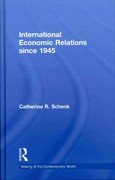Question
Consider a city where there are one million identical households. Each household has the following inverse demand curve for electricity. p =200-2Q, where Q is
Consider a city where there are one million identical households. Each household has the following inverse demand curve for electricity.
p =200-2Q,
where Q is the quantity demanded per household per year and p is the price per unit.
i) Suppose that electricity is supplied by perfectly competitive forms, at a constant marginal cost of $50. per unit. There are no fixed costs. Find the equilibrium price and the equilibrium quantity demanded per household per year.
Denote this quantity by Qc, where the subscript c in Qc indicates that this is the outcome under perfect competition.
ii) Now suppose the perfectly competitive forms merge into a single form (a monopoly). The marginal cost remains unchanged. Assume that the monopoly is required by the regulatory agency to charge a single price. What is the single price that maximizes the monopoly's profit? Denote this price by pm and the associated quantity demanded (per household per year) by Qm. Find the monopoly's profit and denote it by pim. Find the ratio Qm/Qc. Compute the dead-weight loss under single-price monopoly.
iii) Now suppose that the regulatory agency changes its mind and allows the monopoly to use a two-block pricing scheme. The monopoly can announce a first quantity-block Q1 (per household per year).
iv) Compute the deadweight loss under the two-block pricing scheme, and compare it to the deadweight loss under single-price monopoly. Should the regulatory agency allow the monopoly to increase the number of blocks? Please give the reason for the answer
v) Using your answers to (i) and (iii) compute the following ratios:
r1=Q*1/(Q*2 - Q*1)
and
r2=(Q*2 - Q*1)/Qc
What are the meaning of these ratios? Is it true that r1 = 1 and r2 = 1/3? If it is true, c and the associated quantity demanded (per household per year) by Qman you tell whether this results is accidental or whether there is some plausible explanation behind it? Please give your reason for your answer
Step by Step Solution
There are 3 Steps involved in it
Step: 1

Get Instant Access to Expert-Tailored Solutions
See step-by-step solutions with expert insights and AI powered tools for academic success
Step: 2

Step: 3

Ace Your Homework with AI
Get the answers you need in no time with our AI-driven, step-by-step assistance
Get Started


